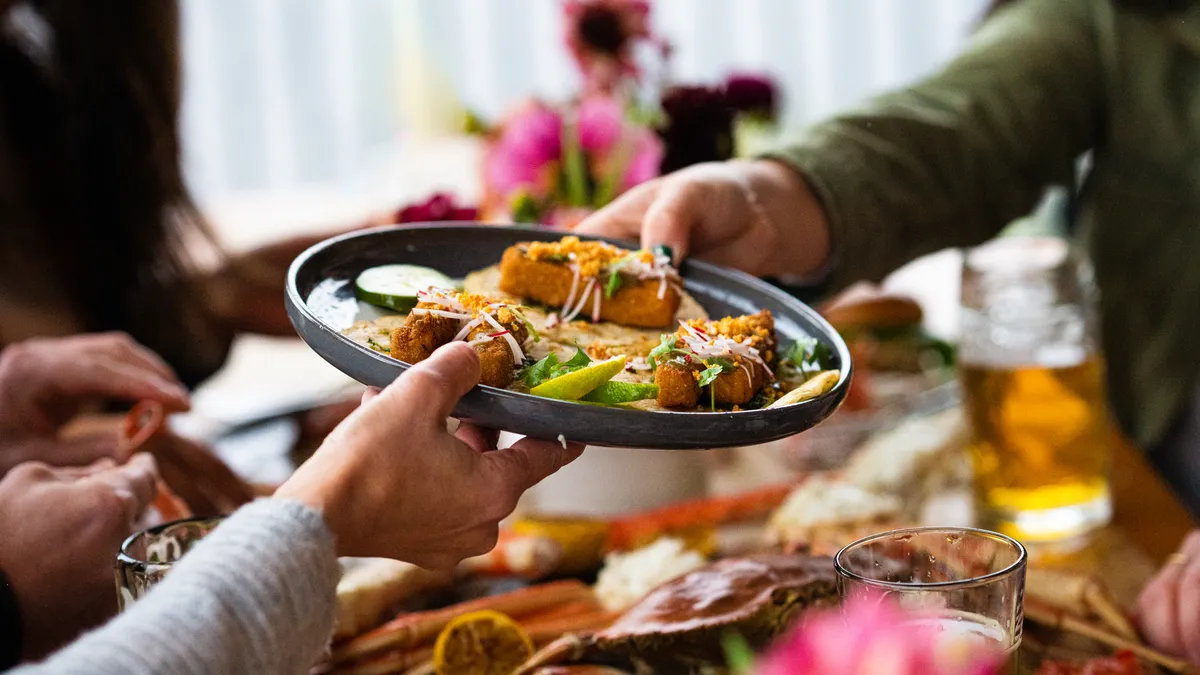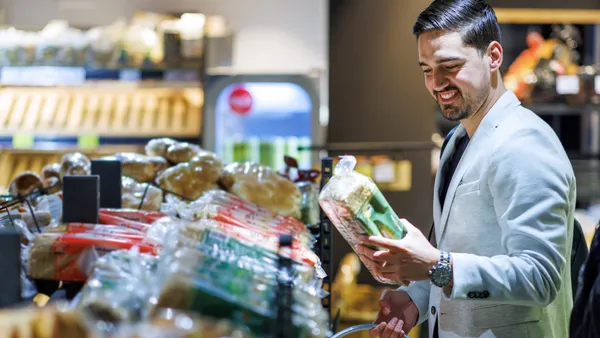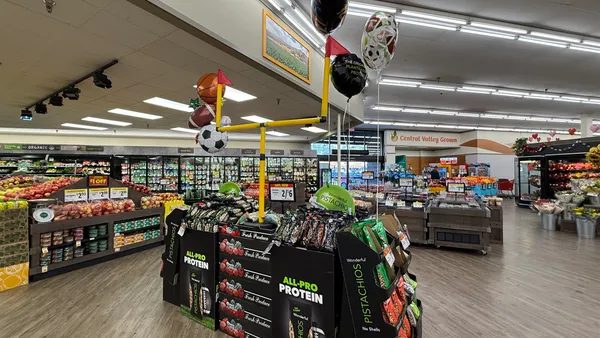Consumers are more aware than ever of the importance of eating healthy foods. The vast majority — 84% — of grocery shoppers consider health and wellness when buying fresh foods, according to recent research from Deloitte and 55% are willing to pay more for foods that could boost their health and wellness.
Wild seafood from Alaska is a scientifically proven way for consumers to improve their health. It includes healthy fats (Omega 3 fatty acids) and high-quality protein, as well as numerous other important nutrients, such as Vitamin D. A seafood-rich diet can have a positive impact on cardiovascular health, eye health, immunity, brain function, prenatal health and more, according to the Alaska Seafood Marketing Institute.
Seafood also fits with several popular diet regimens, including Mediterranean, DASH, pescatarian, Whole 30 diet, paleo, keto, plant-forward diets and any heart-healthy diets.
Mandy Katz, Healthy Living Manager at Landover, Md.-based Giant Food, said Alaska seafood not only offers healthy alternatives for consumers to incorporate into their diets, but it also appeals to consumers seeking to eat more sustainably.
“As a dietitian-nutritionist, we always recommend customers include a lean, heart-healthy protein in every meal and snack to optimize their eating,” she said. “Alaska seafood offers all of that and more, since it’s not only good for the health of the individual, but also for the health of the planet. We know that sustainably sourced food, seafood in particular, is important for customers. Being able to offer a wide variety of sustainable options – fresh, frozen and canned – makes it easy for our customers to add more delicious and affordable seafood to their carts.”
Strategies for promoting the health benefits of wild Alaska seafood
Because Giant Food operates in the heart of the Chesapeake Bay watershed and borders the Atlantic Ocean, its customers are “seafood lovers through geography,” said Katz.
“Although local clams, crabs, and blue catfish are summer staples in the Mid-Atlantic, wild Alaska salmon is a year-round favorite that is featured in many sales and marketing campaigns — as is other wild Alaska seafood — and highlighted during National Seafood Month in October and Lent in the March/April,” she said.
No matter how familiar customers may be with the benefits of a seafood-rich diet, they can also use a reminder, however. At Giant Food, that includes a range of strategies, both in-store and online, to reinforce messaging around both health and sustainability using recipes, social media, podcasts and other tools.
Historically, the retailer’s Alaska seafood promotions had often been value-related, although that has evolved, said Emily Massi, Healthy Living Merchandising Manager, Giant Food.
In addition to supporting messages about affordability, sustainability, storage and usage, Giant Food’s Healthy Living Team also focuses on educating customers about the health benefits of wild Alaska seafood, she said.
“As customer focus on the sustainability, traceability and health [benefits] of seafood like wild Alaska seafood continues to grow, it is essential that retailers be prepared to tell a compelling story that will encourage shoppers to add more seafood to their carts,” she said.
Using recipes to support seafood sales
Recipes are always important tools for retailers when it comes to driving seafood sales. Including Alaska seafood as an ingredient in healthy recipes can help customers not only solve the challenge of how to properly prepare it, but it can also help them with their dietary goals around health and nutrition.
Giant Food relies on Guiding Stars® as its nutrition guidance program that identifies better-for-you foods and recipes, including seafood recipes. As part of its in-store efforts to promote seafood, the retailer uses stanchion signs that include QR codes that link to recipes rated by Guiding Stars, as well as in-store radio and articles in the retailer’s free magazine, Savory.
“Education is also provided through our Healthy Living channels, including our classes [called The Sustainable Diet], store tours, podcasts and blogs,” said Katz.
New ‘Handpicked’ tag
Most wild Alaska seafood education at Giant Food is part of larger seafood marketing and education initiatives, but beginning in the fourth quarter of last year Giant Healthy Living and ASMI partnered to develop a “Handpicked by the Healthy Living Team” omnichannel promotion to market Alaska seafood to customers, said Massi.
“Utilizing the easily recognizable ‘Handpicked’ tag, customers in-store were able to identify wild Alaska seafood options at the seafood counter and in the aisles by looking for purple tags at shelf level,” she explained.
To support the store initiative, the Healthy Living Team also utilized online activations to highlight wild Alaska seafood, including a shoppable blog post (the Try Something New Nutritionist Blog), a social media educational series, an interactive cook-along featuring Jessica Miller from Seafood Nutrition Partnership, and an opportunity to learn more about where food comes from directly from the source on the podcast (Healthy Living by Giant Podcast: Alaska Seafood: Meet the FisherWOMEN).
The campaign was also supported with direct mail to over 714,000 households in the Washington, D.C., metro area and the monthly Healthy Flexible Rewards email, which reaches 102,000 customers.
Leveraging associate education
Ensuring that seafood department staff are well-trained is also crucial to the success of a retailer’s seafood department.
At Giant Food, associate education about Alaska seafood starts with onboarding and continues through ongoing education provided by category managers and department leads, Massi said.
“Like our customers, associates can further explore the health benefits of wild Alaska seafood through Healthy Living initiatives including classes, cook-alongs, store tours, podcasts and social media,” she said, citing the @healthylivingbygiant accounts on Facebook and Tik Tok.
The sustainability of Alaska seafood is also important to Giant Food employees, said Massi.
“Giant Food associates take immense pride in the company’s commitment to sustainability across the aisles, in the back of the house and in the communities we serve,” she said.
Wild Alaska seafood can help retailers meet the demands of today’s health-conscious shoppers, while also meeting their demands for sustainable solutions.
For more information about the health benefits of wild Alaska seafood, from high-quality protein to Vitamin D and other nutrients, visit the ASMI Health & Nutrition website.










